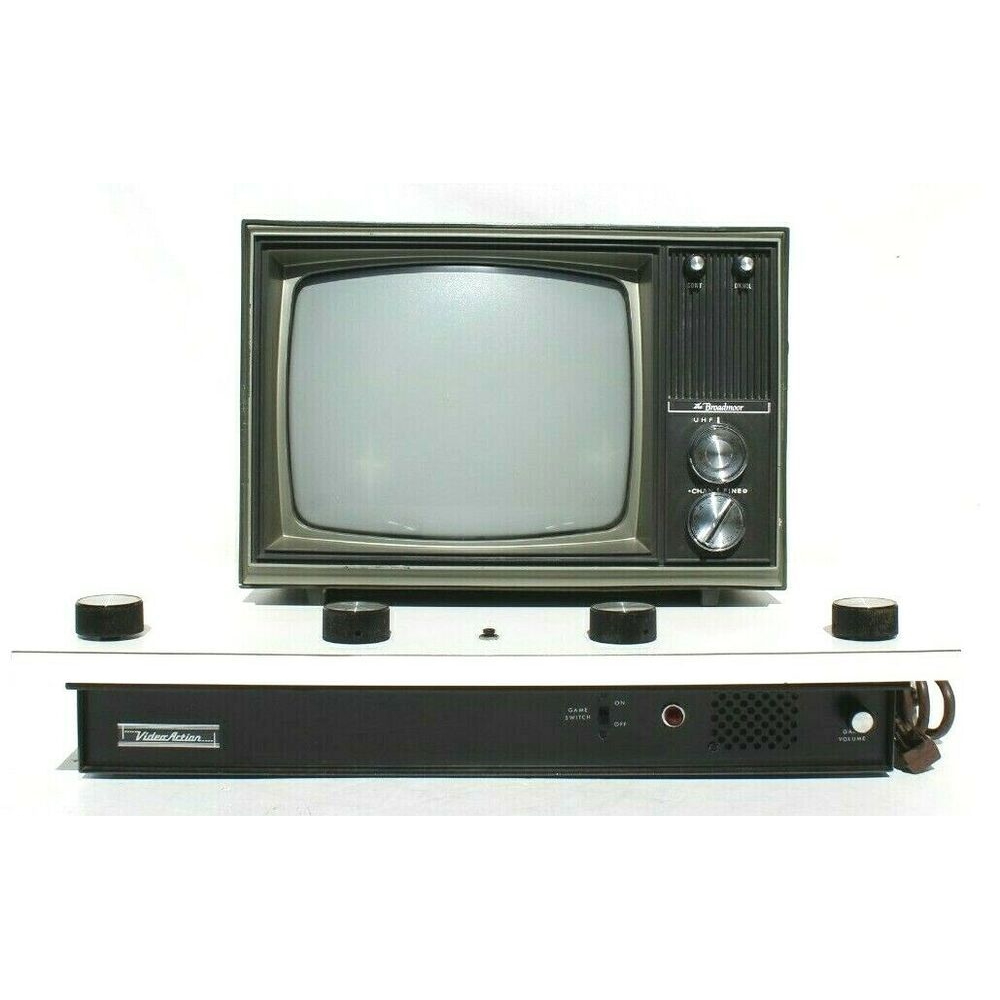|
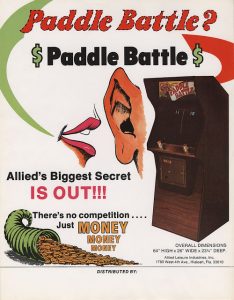 History
History
After the release of the Atari Pong arcade in November 1972, Allied Leisure Industries, a pinball manufacturer of founded in 1972, wanted to create it own version of Pong. They contacted a distributor in California and paid twice the amount it was worth, to acquire one quickly. As the engineers at Allied Leisure Industries were not used to solid-state games, they reached out in February 1973 to Universal Research Laboratories (URL) to help them make their own version of the game. Allied Leisure Industries provided URL with a 25,000 advance.
URL took apart the Pong arcade and realize it was not built with durability in mind. The coin-up industry customers was a merciless and machine needed to be able to sustain abuses, multiple power up and power down, choc, etc. The Atari Pong was just not built that way so Allied Leisure Industries and URL took upon themselves to redesign the power supply, the coin circuitry, and the power on the board and the logic board which had 76 or 77 7400-series TTL chips on it.
On March 8, Allied Leisure announced the release of its Pong clone : Paddle Battle. The game quickly sold 22,000 copies and Allied Leisure Industries and URL continued working together on other arcade games such as Tennis Tourney. On January 1974, Allied Leisure Industries manufacturing plant had burned to the ground.
Before the fire, Paddle Battle and Tennis Tourney were selling like hot cakes, so URL was buying Integrated Circuits in huge lot to be able to supply to the demand. Since the fire halted all production, URL was stuck with a large number of electronic parts. Instead of waiting for Allied Leisure Industries to move into a new plant, URL decided to put these parts to good use and to create a consumer game.
Release
Release in the summer of 1974, release two models of the Video Action II : the VA-II which was the consumer model and the VA-IIC. The console included games: Hockey, Soccer and Tennis. Early VA-II models were sold with a 12″ The Broadmoor brand television model 2412-BW for the sum of 499$ and were aimed at the market segment of bars and waiting room. Other sources mentioned that the television might have been integrated directly in the console enclosure, but all factual elements discovered so far s point to a included television set that was not part of the enclosure. In fact, as part of the deal with Broadmoor, Universal Research Laboratories allowed Broadmoor to sell their own version of the Video Action. Called FourPlay (Model P-12), it was sold alongside a 2712-WA Broadmoor television set.
On January 5th 1975 during the winter edition of the Consumer Electronics Show in Chicago, URL presented the VA-II for the first time in a public forum. During this CES, it was announced that the VA-II would now be available to purchase without the television set for 299$. On January 13, 1975, a few days after the CES, Magnavox send a letter to URL charging for infringement of television game patents. URL ignored the letter and continue to sell the VA-II through electronic stores and department stores such as Sears and Roebuck and Montgomery Ward.
Demise
The VA-II was expensive. Very expensive in fact. The board itself , made from high-end components like the arcade, cost around 200$ to produce, hence the high price tag. The VA-IIC model, which was designed to be coin-operated, sold reasonably well for the time as it was a cheap an compact alternative to a PONG arcade. Since it was coin-operated, the unit would end up paying for itself. But the standard VA-II model was a lot less attractive. The VA-II had only one selling point: it was the only alternative to the Magnavox Odyssey. Although more advance in some way, at 299$, it was about 200$ more expensive than the 1972 console. But it wasn’t long before other consumer-grade PONG-like console hit the market. In 1975, at least 5 other consoles were released in North America, including the Television Tennis by Executive Games, the FD3000 by First Dimension, both the Magnavox Odyssey 100 and 200 and the Tele-Games PONG (the Sears-branded version of the Atari PONG). These systems were more portable could be battery operated (some) and were cheaper. URL had no choice but to release a cheaper version of their consoles if they wanted to stay competitive. In 1976, they would finally release the Video Action III (VA-III) and the INDY 500.
On June 6, 1977, URL filed for bankruptcy and would therefore never be involved in the legal action Magnavox took against multiple video-game company of the time for patent infringement.
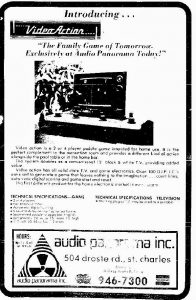 | 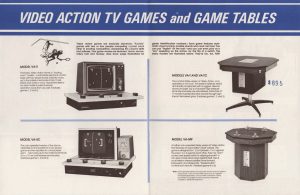 | 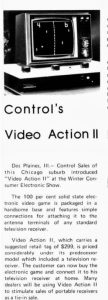 | |||
| Newspaper Ad September 2, 1974 | Flyer 1975 | Replay Announcement February 1975 |
For a more in-depth analysis of the actual release date of the VA-II, please read the article “URL’s Video Action – The First US Consumer Video Game after Odyssey?” from the The Golden Age Arcade Historian.

